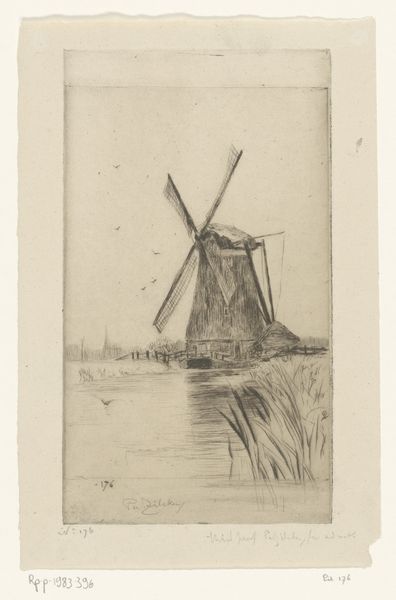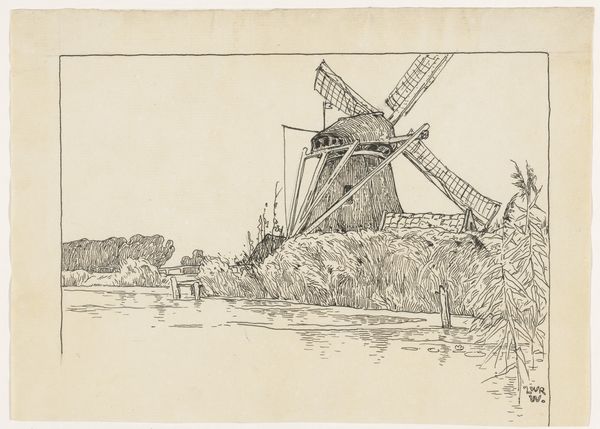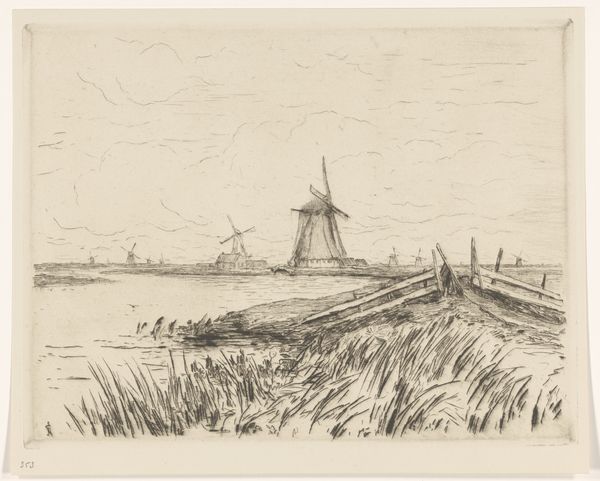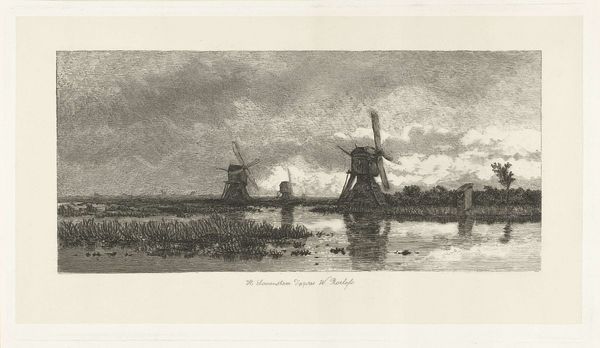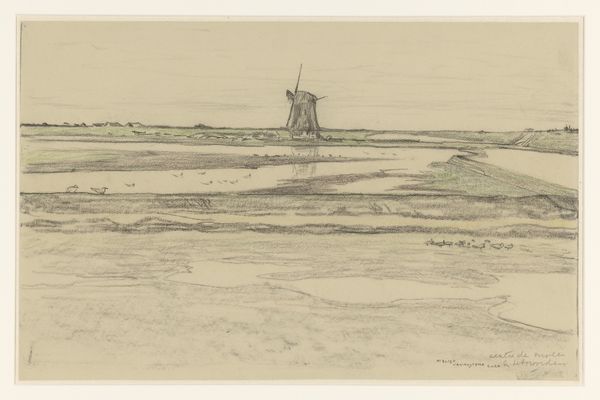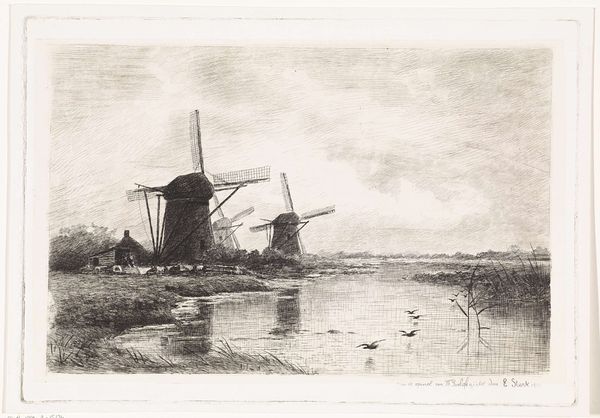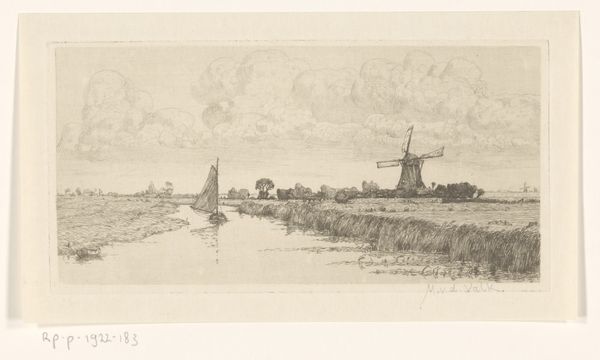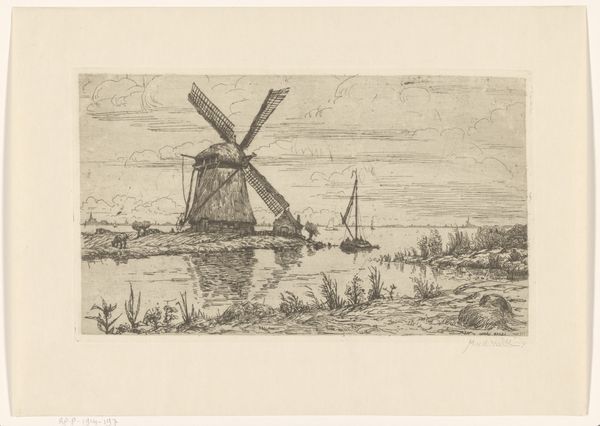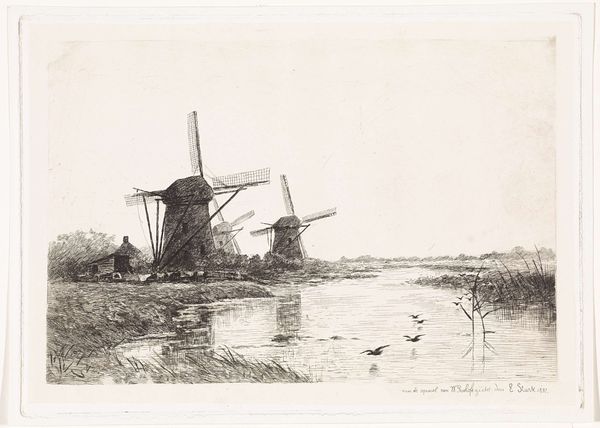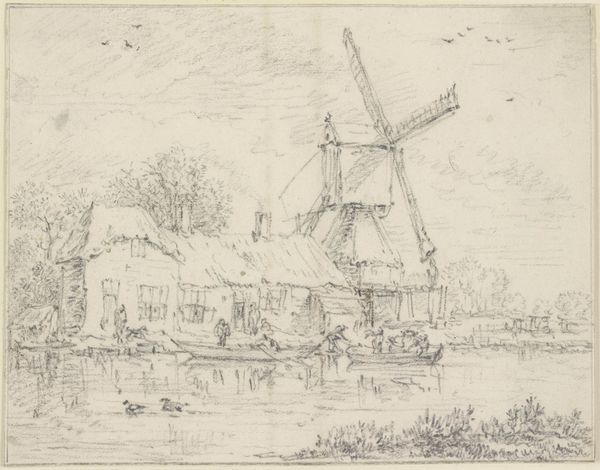
drawing, pencil
#
drawing
#
dutch-golden-age
#
landscape
#
pencil
#
realism
Dimensions: height 318 mm, width 449 mm
Copyright: Rijks Museum: Open Domain
Curator: Looking at Alphonse Stengelin’s pencil drawing, titled “Molen aan het water bij Giessen-Oudekerk,” which likely dates from between 1876 and 1910, I'm immediately drawn into its tranquil scene. What’s your first impression? Editor: There’s a hushed quality. The windmill almost seems to sigh into the landscape. It is a solitary witness overlooking still water and feels like time held its breath. The stark monochromatic palette adds a touch of faded memory to the scene. Curator: Absolutely. There’s a deliberate choice to capture the simplicity of rural life, a retreat from industrialization, really emphasizing a specific picturesque vision tied to national identity. The way the artist meticulously rendered the details of the windmill and its reflection suggests a fascination with its architectural and historical significance. Editor: You know, thinking about the location – Giessen-Oudekerk – I see how Stengelin really elevates what might otherwise seem like an everyday scene. There are men bathing, doing laundry. And his masterful handling of light and shadow – especially on the water surface– gives the drawing depth, a soul. It is more than observation; it is a romantic communion with nature, filtered through the lens of the late 19th century. Curator: Yes, but let’s consider how this “romantic communion” connects with its cultural context. Images like these played into narratives of Dutch heritage and landscape, essential elements for solidifying national unity, and constructing idealized visions of rural past, and traditions. Editor: And what an impact. Even today, looking at it, I feel almost physically transported to that place and time. And to imagine that effect being magnified across the society. This artwork feels like more than an aesthetic choice; it embodies cultural purpose in that respect. It connects our minds to it now. Curator: Indeed. By studying Stengelin's work and its era, we're able to reflect more thoughtfully on what role we allow artwork to fill and perpetuate within society, whether conscious or not. Editor: It is amazing what such humble pencil drawings can evoke once you start to scratch below the surface. Thanks for helping to amplify its story for everyone.
Comments
No comments
Be the first to comment and join the conversation on the ultimate creative platform.
